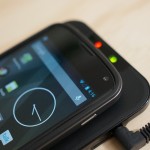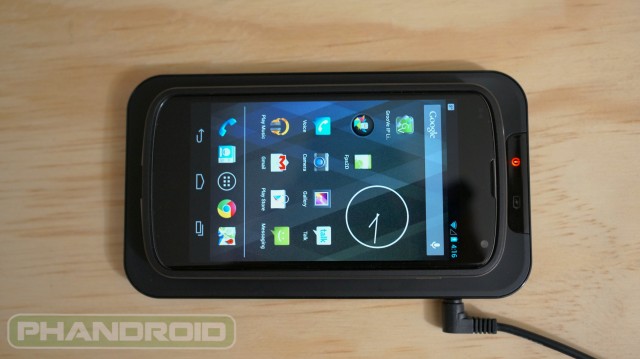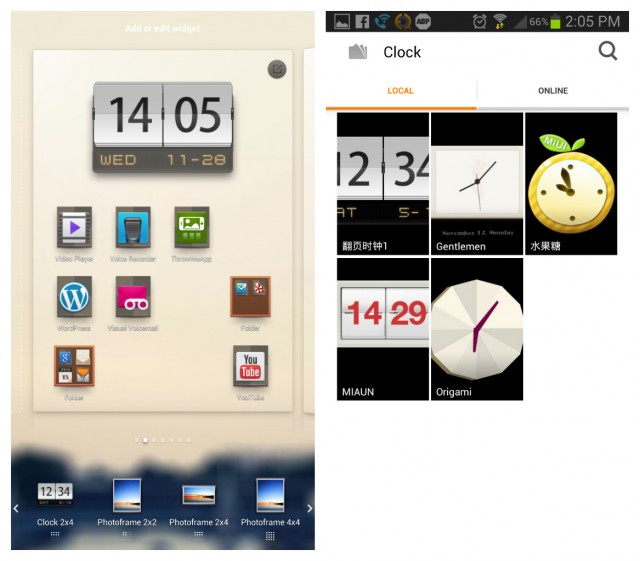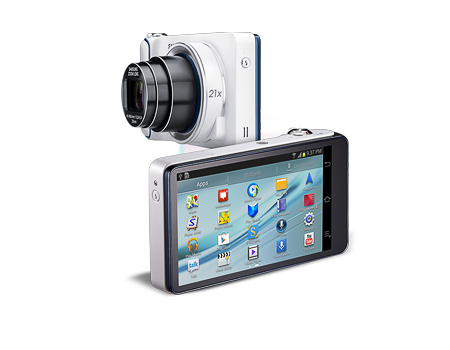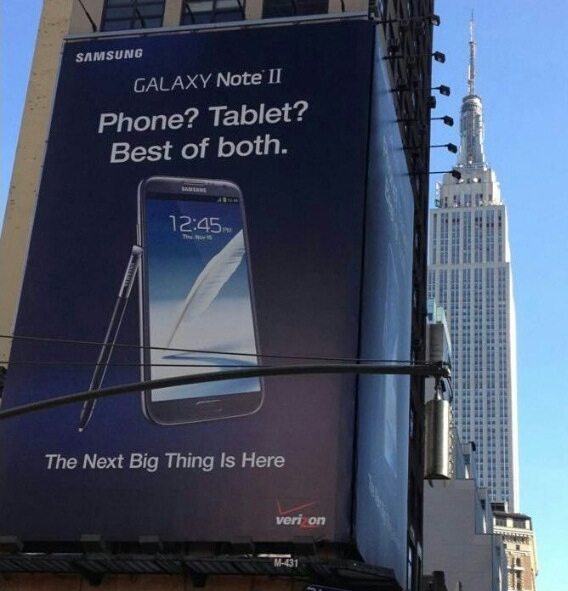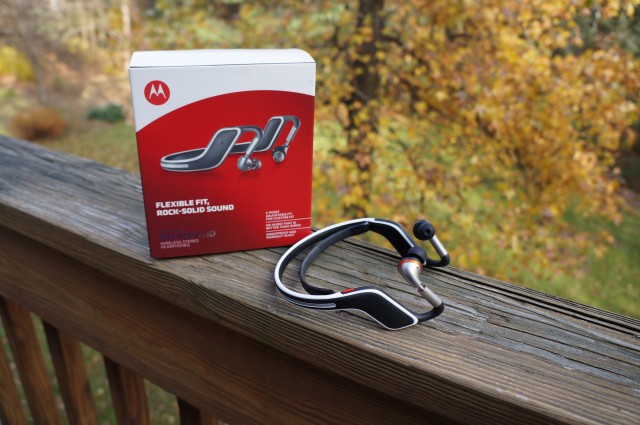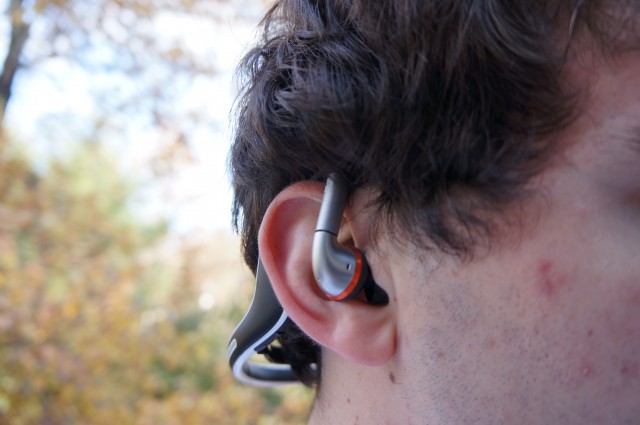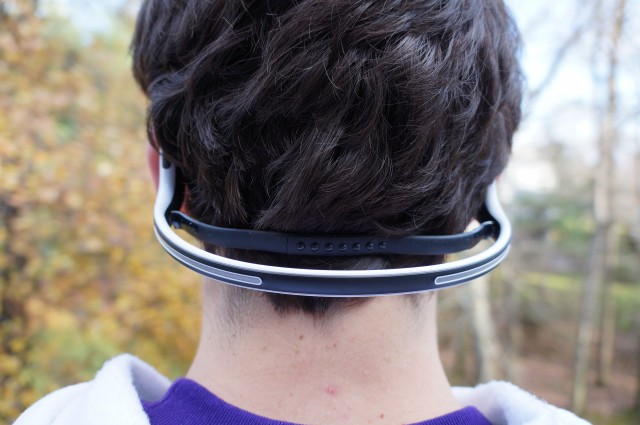Android Authority |
- Aocos PX102 Humming Bird 2 is a $200 Asus Transformer alternative
- Run Sony’s PlayStation Mobile on any rooted Android devices
- Caesar III on Android? Yes, please! And how about some StarCraft while you’re at it?
- Toshiba to start shipping new class leading 13 MP camera sensor next month
- RBS and Visa join hands to launch V.me in UK
- Motorola Atrix HD Developer Edition goes for $459.99, not for the faint of heart
- Amazon AppStore comes to Japan
- Heads continue to roll at Apple over Maps fiasco. Why doesn’t Apple just concede to Google Maps?
- Modern Combat 4: Zero Hour developer diary shows off multiplayer [video]
- Microsoft attacks Google with “Scroogled” campaign
| Aocos PX102 Humming Bird 2 is a $200 Asus Transformer alternative Posted: 29 Nov 2012 02:56 AM PST
At slightly over $200 (1299 Yuan) you would expect the PX102 to have some major drawbacks, but when looking through the specs and having a good gander at the design all seems surprisingly good! Like the Asus Transformer tablets, the Aocos PX102 has a 10.1 inch screen with a resolution of 1280 x 800, dual cameras and a detachable keyboard. The CPU is a 1.6Ghz dual-core Rockchip unit, which is noted for handling 1080 video very well, and there is 1GB RAM plus 16GB of internal memory. The tablet half of the PX102 measures just 9.6mm and features a single 2.0 USB , Micro USB, HDMI out and a micro SD card reader. The detachable keyboard is rechargeable and connects via Bluetooth. At $200 there are some obvious cost cutting measures such as the low resolution cameras (front 0.3MP, rear 2MP), lack of built-in 3G and uncertain future support, but if you're in the market for a bargain this Christmas it could be worth a look. Related Posts |
| Run Sony’s PlayStation Mobile on any rooted Android devices Posted: 29 Nov 2012 02:32 AM PST
The new PlayStation Mobile was finally launched in October, bringing Sony's treasure trove of games to certified Android devices. Aside from the obvious, the mobile gaming platform should theoretically run on several HTC and Sharp phones as well. If you don't see your device on the list of compatible handsets, there's a way to get in on the PS gaming fun. You just have to follow the instructions shared by noted XDA member NOMIOMI. First thing first – the method only works on rooted Android devices. If you pass the first test, then it's only a matter downloading the PlayStation Mobile APK and the provided flashable zip file, as well as pushing some files into various directories on your device – hence, why root is required. Sounds easy enough, right? Once you've set up everything, you just have to sign up for a new Sony account to get started. Just a hint, apparently you can put down any U.S. address in order to bypass the country restriction. You should then be able to download and install free and paid games there, though understandably not every game will run without a hitch. After all, your device isn't really certified by Sony. Check out the original thread for the gory details. Don’t forget to let us know how the PlayStation Mobile workaround works for you in the comments below. Related Posts |
| Caesar III on Android? Yes, please! And how about some StarCraft while you’re at it? Posted: 29 Nov 2012 02:21 AM PST
It's not often that I am genuinely excited about a piece of software. I guess I am jaded. But not today; today I am here to report on something that really makes me say "wow, finally!" And I am betting that, if you're anything like me, you'll say the same thing. Winulator is an Android app that provides a runtime environment for DirectX API Windows programs. So, it's a type of emulator, but, according to the app's developer, it's not an emulator in the classic sense of the word. For a program to run in Winulator, it requires a one-time conversion process, using a PC application called Winulator Converter Helper. The conversion is required due to the different processor architectures – Windows programs are written for the x86 architecture, while most Android devices (save for a few Intel-atom powered ones, like the Motorola Razr i or the Orange San Diego) run on ARM processors. WCH will convert the .exe and .dll files of the original Windows 95 or Windows 98 apps and turn them into ARM compatible applications. The project is Dan Aloni's brainchild, and so far, he modified one Windows game to run on Android – Caesar III, the seminal city-builder released in October 1998. Aloni got it to work on his Asus Transformer TF-101 and on a Galaxy S, although there still are some kinks to be ironed out (notably, the in-game sound doesn't work). Each app needs to be manually converted and modified to run in Winulator, which is a time consuming process. So far, Dan Aloni only got Caesar III to work on Android, but he says he'll add more games and applications, depending on demand. He eventually plans to release the app on the Play Store. I am not sure about the IP implications, but hopefully, the project won't face too much legal hassle. Now, I know what game I'd like to play on my Galaxy S2. It's the one and only StarCraft Broodwar. If someone manages to port it to Android, it'll be truly a dream come true for me. What games of yore would you like to play on your Android device? Related Posts |
| Toshiba to start shipping new class leading 13 MP camera sensor next month Posted: 29 Nov 2012 01:29 AM PST
When people think camera sensors, usually two companies come to mind: Sony and OmniVision. Now yes, both Samsung and LG also make camera sensors, but there’s a reason that Samsung’s Galaxy S III and Apple’s iPhone 5 use a Sony component. Not to be forgotten, Toshiba is also in the camera sensor business. They were the company responsable for the 41 megapixel sensor inside Nokia’s 808 PureView. Today they’re announcing that they’ve developed a 13 megapixel sensor that they say is best in class. Because the sensor is so small, with an optical size of just a third of an inch across, each pixel measures 1.12 microns. Smaller pixels almost always translate to worse image quality, but Toshiba has integrated both backside illumination technology and color noise reduction into this sensor. So how long until we see devices shipping with this sensor? Toshiba says they’re going to begin shipments next month, with each sensor costing roughly $20. Add in the time it takes for a handset maker to iron out all the kinks, and you’re looking at somewhere around the first half of 2013. Which companies are going to make use this component? That’s tough to say. Analyst firms will no doubt tear apart flagship phones to figure out which companies made which parts, but that data isn’t going to come out for at least a few more months. To tell you the truth, we really couldn’t care less about the sensor itself. The industry has reached a point where it’s the lens, white balance sensor, and image processing algorithms that make or break a camera phone. The only real innovation in terms of hardware that we’ve actually seen this year came from Nokia with their Lumia 920. That device features optical imaging stabilisation. How long until that feature comes to other devices? That’s what we want to know. Related Posts |
| RBS and Visa join hands to launch V.me in UK Posted: 29 Nov 2012 01:11 AM PST
V.me, Visa’s foray into the digital wallet space, has now seen the light of day, at least in the UK. While the financial and payment services company chose RBS (and by extension Natwest) as its launch partner, V.me is going to be available with many more banks as the service grows more mature. According to the official statement by Visa, the “initial trial” is still underway and they are shooting for a primetime release sometime in spring 2013. Spain and France are also confirmed to be the other two eurozone countries that will get the service, although dates are still uncertain. To refresh your memory, V.me exited beta with 53 bank partners and 23 retail partners, certainly giving it some credibility and initial momentum to storm a soon-to-be saturated market. With Paypal’s Digital Wallet, Google Wallet and Square Wallet all amongst its competitors, V.me will need every single one of its partners to make itself visible to consumers. Check out the full press release from Visa below. Visa Europe confirms RBS as launch partner for V.me by Visa London, 28 November 2012 – Visa Europe today confirmed that RBS will be the first UK financial institution to launch the V.me by Visa digital wallet for RBS and NatWest consumers. An initial trial for the RBS and Natwest wallet is currently underway, before a full rollout in the spring of 2013, making V.me by Visa available to customers of both brands. Mariano Dima, Executive Vice President of Product and Marketing Solutions at Visa Europe, said: “We are delighted to announce RBS as the launch partner for Visa Europe's V.me digital wallet in the UK. Visa is committed to making online payments even easier and more secure, and our partners such as RBS are helping us make this vision a reality. It is our intention to make the V.me brand as trusted and well known for digital payments as the Visa brand is on the high street today.” Dima adds: “The feedback from banks in the UK has been extremely positive and we will be announcing further V.me support from several major banks in the coming months.” Steve Rubenstein, Director of Everyday Banking at RBS, said: “As a business we are very excited by this partnership with Visa and the development of V.me. We believe that a proposition which reduces the effort of buying things online, while also improving security, for our customers is exactly the sort of thing we want to deliver. V.me clearly delivers this and we look forward to offering it to our customers in 2013.” The fast and simple V.me by Visa payment experience allows consumers to complete online transactions through the internet browser on a PC, laptop, tablet, or smart phone in a simple and easy manner. As a result, both consumers and retailers can benefit from all the security and scale of the Visa brand. V.me by Visa plays a key part in Visa Europe's future of payments strategy, reflecting the company's continued commitment to payments innovation and to bringing new services to market that benefit consumers, members and retailers. The service will continue to evolve post-launch to incorporate other Visa payment technologies, including contactless transactions at the point of sale and person-to-person payments. Payments processor WorldPay is a key development partner in the delivery of the V.me by Visa proposition in the UK. BBVA was recently confirmed as the V.me by Visa launch partner in Spain. The service will also launch in France in late 2012. Further issuing banks will be confirmed for all three markets at a later date. Related Posts |
| Motorola Atrix HD Developer Edition goes for $459.99, not for the faint of heart Posted: 29 Nov 2012 01:06 AM PST
If you got some cash to spare for the Motorola Atrix HD Developer Edition, otherwise known as the Atrix HD variant that comes with an unlockable bootloader, you can now head to Moto's website to pre-order the phone. The tinkerer-friendly Atrix HD Developer Edition will cost $459.99 with no contract, and will be shipped out on December 16. The whole point of getting the special edition of the Atrix HD is that so you can get right into action with modding and the likes, but by doing so Moto has provided the following warning: "Warranties will be voided". This is obviously one device that's catered more for power users that don't mind venturing into warranty-less territory. The Atrix HD is joining Moto's lineup of Developer Edition phones, such as the Droid Razr HD, and the Droid Razr M. Similar to the others, the specs of the phone are unchanged. It's still the good ol’ Atrix HD that offers a 4.5-inch HD display, a dual-core 1.5GHz Snapdragon S4 processor, 1GB RAM, 8GB internal storage, 8MP main camera, 1.3MP front camera, 4G LTE, 1,780mAh battery, and Android 4.0 Ice Cream Sandwich. An upgrade to Android 4.1 Jelly Bean might come very soon. Related Posts |
| Amazon AppStore comes to Japan Posted: 28 Nov 2012 10:08 PM PST
Why does Godzilla usually attack Tokyo instead of any other city in the world? We don’t really know. But what we’re sure of is that there’s a something else reaching the shores of the land of the rising sun, and that’s Amazon’s AppStore. Amazon is doing its seventh AppStore launch, and the sixth outside of the U.S., following Germany, France, Italy, Spain and the UK. This launch comes alongside the news that Amazon is likewise launching the Kindle Fire in Japan, with shipments starting on the third week (December 19th to be exact) — just in time for the holiday rush. Amazon’s Japan AppSore will feature the same basic functionality as with other markets, offering an alternative app marketplace to the Google Play Store. Of course, we can expect some localization of content, and also some features similar to other markets like Free App of the Day. Apart from the AppStore and Kindle Fire, Amazon is also bringing its cloud services to the Japanese market, notably Cloud Drive, which will be offered free up to 5GB, and with consumer plans startig at JPY 800 (around US$ 130) per year for 20GB, which is similar to pricing schemes in other regions. Japan is, of course, home to several high-profile mobile brands like Sony, mobile gaming platform and developer GREE, as well as Softbank, which is acquiring American telco Sprint. With Amazon’s launch of its app ecosystem and tablet in the country, Android lovers from far east will have yet another platform to enjoy. Related Posts |
| Heads continue to roll at Apple over Maps fiasco. Why doesn’t Apple just concede to Google Maps? Posted: 28 Nov 2012 07:47 PM PST  Image credit: Consumer Reports I’ve been reading a lot about how iOS 6 users are finding their Maps app inadequate for their needs. I have not actually tried iOS6 Maps until last week when I upgraded my old iPhone to 6.0.1. I can say that it absolutely sucks. Even the Google Maps implementation in a cheap-o Gingerbread-powered Samsung Galaxy Y that I own is worlds better in terms of speed, navigation and functionality (like offline caching and “star” syncing, to name a few). It seems people are starting to notice and do something about it, including Apple executives. Reports have it that Eddy Cue, Apple’s senior VP for software and services, has edged out Richard Williamson, who has — until now — headed Apple’s Maps effort. Sources from within Apple say Cue wants to install a new leadership team for its Maps group, although it’s not immediately known who will head this effort moving forward. After receiving much criticism for Maps in the iPhone 5 and iOS 6, Apple CEO Tim Cook actually issued an apology in which he said the company was “extremely sorry for the frustration” that Maps has caused iOS users. To date, Google has not yet released its own standalone Maps application for iOS 6, even though the company has already released a YouTube app in lieu of Apple’s replacing the iOS video app with their own. Some cite Apple’s stringent approval process, although Google may likewise be deliberately delaying its own development or submission, if only to let its own Android platform maintain an advantage in this area. Apart from Williamson, another high-profile executive also left Apple in line with the Maps fiasco a few weeks back. Scott Forstall, who has headed iOS development since the start, also left Apple, in a move that was rumored to be related to the disappointment with Maps. Forstall was reportedly unwilling to be part of the apology letter that Apple issued regarding Maps, hence his untimely departure. Is Apple finally going to do something about their Maps app? It’s one thing to release a half-baked product and improve along the way. Both startups and big companies do this under what they consider to be “beta” applications. But Apple made the mistake of saying its Maps would be one of the best services, but then proceeded to disappoint. Not all Apple products have been market successes, and in its current iteration, Maps will probably go down history as another Newton, Lisa or G4 Cube. Heads have rolled in Apple’s aim to fix its mistake. Will Maps emerge as a better product moving forward? Or should Apple just bite the bullet and let Google handle what they do best? Related Posts |
| Modern Combat 4: Zero Hour developer diary shows off multiplayer [video] Posted: 28 Nov 2012 05:35 PM PST
Modern Combat 4: Zero Hour, the latest installment in Gameloft’s successful game franchise, is getting closer and closer to release, and Gameloft wants to make sure that gamers stay excited. To ensure that they do, the game’s latest developer diary is showing off new improvements to multiplayer. The multiplayer experience for Modern Combat 4 has been overhauled, including new game modes. “Barebones” hearkens back to the simpler times of Modern Combat 2, while “Warfare” offers a more objective oriented sort of gameplay. Players fight for control of different zones, each of which offer different bonuses like additional ammo or continuous radar. In addition to the multiplayer game modes, Modern Combat 4: Zero Hour will feature an improved armory which will now show the game’s nearly 100 different weapon attachments in 3D. The game’s developers say that players will be able to customize their weapons to their individual play styles more than ever. For a closer look at some of the features on the way, check out the video below: While we don’t have an exact release date, the game is still supposed to be released sometime this fall. We haven’t heard any pricing details, but it’s fairly safe to assume that Modern Combat 4: Zero Hour will be similarly priced to previous installments in the series. Has this latest developer diary got you excited for Modern Combat 4? Are you planning to pick it up when it’s released? Related Posts |
| Microsoft attacks Google with “Scroogled” campaign Posted: 28 Nov 2012 04:55 PM PST
While anti-Google ads from Microsoft are nothing new, their latest salvo fired against the company seems less like an advertisement for a search engine, and more like a political attack ad. “Scroogled,” a portmanteau of “Google” and “screwed,” seems to be a major focus of Bing’s holiday advertising, and to be fair, it isn’t completely baseless. In May of this year, Google Shopping made a transition from using a search algorithm similar to how other Google searches work to a system where listed merchants pay to be included in the results, either on a pay-per-click or pay-per-transaction basis. Ads or Answers?Microsoft says that this practice isn’t fair, but Google sees it differently, saying that “ads are just more answers to users' queries.” As with Microsoft’s criticisms, this isn’t as easy to write off as it may seem. Those who use Google Shopping are doing so because they are looking to buy something, and companies paying to make sure that they are seen first in search results isn’t that different from placing other ads. Google has been relatively transparent on this matter, but this is where Microsoft is really playing its hand. By suggesting that customers are being “Scroogled,” they are also suggesting that Google is breaking its “Don’t be evil” policy. The most prominent text on Microsoft’s Scroogled website reads:
Who Is This Good For?Microsoft is promising that Bing won’t “switch to pay-to-rank to allow some shopping search results to appear higher than others,” and that’s a good thing for consumers, but it raises a question. Are these types of ads, which seem to be increasingly prevalent, a good thing for consumers? Or will this just lead to an ultimately more confusing climate for regular people? Related Posts |
| You are subscribed to email updates from Android Authority To stop receiving these emails, you may unsubscribe now. | Email delivery powered by Google |
| Google Inc., 20 West Kinzie, Chicago IL USA 60610 | |

 The Asus Transformer range really set the bar for convertible Android tablets, but their high prices have kept them out of reach of many gadget lovers. If you can't justify spending the money on an Asus, take a look at the Aocos PX102 at just $208!
The Asus Transformer range really set the bar for convertible Android tablets, but their high prices have kept them out of reach of many gadget lovers. If you can't justify spending the money on an Asus, take a look at the Aocos PX102 at just $208!







